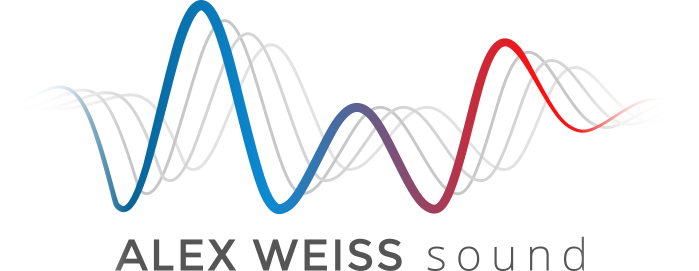Another Reason to Love MS
There are many reasons to love MS. But here’s another reason why I pretty much always record in MS, even if I never intend to use the recording in stereo: worldizing! Think of MS as giving you two different-sounding mono versions of your recording: one fully on-mic, the other fully off. The two channels of an XY recording, in contrast, tend to sound fairly similar since both microphones are equally off-axis from the source (just once to the left of the mic and once right). You can see the difference here:

In interior spaces, the side channel (pictured above in red) will give you a roomy version of your signal while the mid channel provides a dry (or at least drier) signal. Assuming the space you recorded in is similar to the space you’re cutting for, you can use each channel individually to cut for perspective. For off-screen sounds, for example, I often just cut in the side signal. You can even mix both the M and S signal together to dial in the perceived roominess of your signal. Think of this technique as creating a virtual microphone that can be rotated around: the more mid signal you mix in, the more the virtual microphone rotates from fully off-mic (pointing to the left in the picture above) to on-mic. If you mix M and S equally, you essentially recreate the left channel of the equivalent XY recording (since X = M + S), which points halfway between fully on-mic and off-mic.
Here’s an example from my bathtub recording session:
Mid only:
Side only:
Both mixed together:
For most small to medium-sized rooms the resulting effect is fairly subtle (which I like) and to my ears more realistic-sounding than just using artificial reverb. But that doesn’t mean you can’t combine both techniques. In fact, to make things sound far away in a room or off-screen, I’ve found that the side channel often responds better to artificial reverb than the mid channel; since there is already some roominess baked in, you can get away with a more restraint reverb treatment. In comparison, if you start with a dry mid channel, you usually have to push the reverb more, which often betrays its artificial origin (even when using high quality reverbs). But as usual, all of this is subjective and depends on what effect you’re going for and the style of the project you’re working on. I’ve had good luck with this technique on some projects, but there were others where the results just sounded too raw and gritty. Realism isn’t everything.
There are also some drawbacks to using this technique. The most obvious one is that you can only use it if the room you recorded in matches the room you’re cutting for. Additionally, the signal-to-noise ratio is usually worse on the side channel than on the mid, so you really need a pretty quiet room for this to work.
